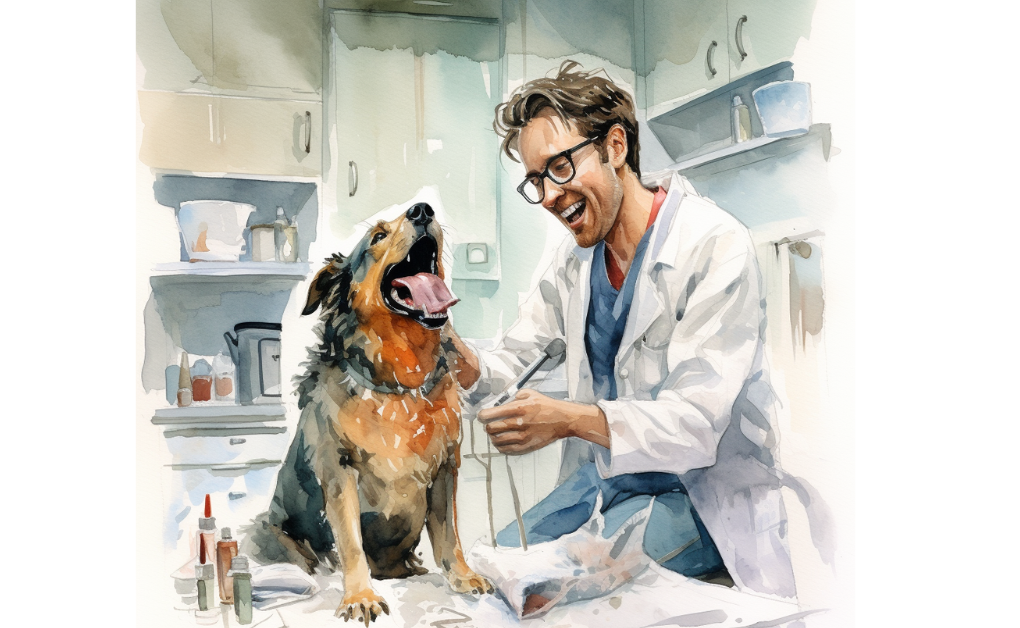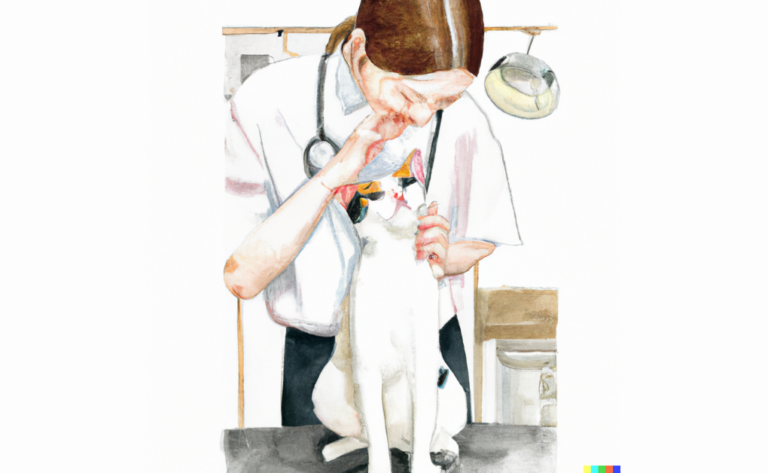What Are Oral Masses in Dogs?
What is it?
How is it Treated?
Breed Predispositions
Oral masses can develop in dogs of any breed or age, and there is no known predisposition to specific breeds.
Introduction
Olivia had always taken pride in keeping her lovable French Bulldog, Daisy, healthy and well-groomed. During one of their regular grooming sessions, Olivia noticed an unusual lump on the inside of Daisy’s cheek. Although initially hoping it was just a harmless swelling, Olivia’s gut told her it was best to consult her veterinarian. After a thorough examination, the vet confirmed that Daisy had an oral mass.
Oral masses in dogs are growths or swellings found within a dog’s oral cavity. They may appear on various parts such as the gums, tongue, oral mucosa (the lining of the mouth), the roof or floor of the mouth, or the inside lining of the cheeks. These masses may be benign, constituting common benign oral tumors, or they may be malignant, indicating oral malignancies.
The texture and visual characteristics of oral masses in dogs can exhibit considerable variation. For example, some might manifest as small, firm nodules, while others might take on the form of extensive, tender, cauliflower-like growths. Whether singular or multiple, these tumors could be painless or induce discomfort based on their size, placement, and impact on surrounding structures. In addition, in certain cases of oral masses, tumors are locally invasive, affecting the areas around them.
While large tumors are prevalent, oral masses range in size and are found in dogs with varying frequency. It’s essential to note that tumors most commonly impact older dogs but can be found in dogs of all ages.
Types of Oral Masses in Dogs
Benign Epulides
Benign Epulides are noncancerous growths in a dog’s oral cavity, specifically on the gums. They are one of the most common types of oral tumors in dogs and can appear at any age but are more commonly found in middle-aged to older dogs. There are three types of benign epulides: fibromatous, ossifying, and acanthomatous.
- Fibromatous Epulides are firm and smooth masses that attach to the gum line or the periodontal ligament. They do not invade the surrounding bone or tissue but can become large enough to interfere with chewing or cause discomfort.
- Ossifying Epulides: These are similar to fibromatous epulides but have an area of bone-like material within the mass. Like fibromatous epulides, they do not invade surrounding tissues but can grow quite large.
- Acanthomatous Epulides: These growths are more aggressive than the other two types and can invade the surrounding bone. Despite this, they are still considered benign because they do not metastasize or spread to other body parts.
Malignant Tumors
Malignant tumors in dogs refer to cancerous growths that have the potential to spread (metastasize) to other areas of the body. They tend to be more aggressive than benign tumors, often invading surrounding tissues and potentially leading to serious health issues. There are various types of malignant oral tumors in dogs, including:
- Melanoma: Melanoma is the most common type of malignant oral tumor in dogs, often appearing as a dark, pigmented mass in the mouth. However, not all melanomas are pigmented. They tend to be aggressive and can spread to other body parts, particularly the lymph nodes and lungs.
- Squamous Cell Carcinoma: These tumors often form on the gums and can lead to severe bone destruction. They may spread to nearby lymph nodes but rarely metastasize to distant organs.
- Fibrosarcoma: Fibrosarcomas are malignant tumors arising from the mouth’s connective tissue. They are locally invasive but less likely to metastasize than melanoma or squamous cell carcinoma.
- Osteosarcoma: This bone cancer can occur in the jaw. It isn’t amicable and can potentially spread to other body parts.
Odontogenic Tumors
Odontogenic tumors in dogs are rare and typically grow in the jaw or oral cavity, arising from cells involved in tooth development. Because these tumors originate from the structures that form teeth, they are often associated with the tooth-bearing areas of the mouth. They can be benign or malignant.
- Ameloblastoma: These are benign odontogenic tumors often seen as slow-growing, well-delineated masses. They arise from the ameloblasts, cells involved in enamel formation. They can cause significant local bone destruction but rarely metastasize.
- Odontogenic Carcinoma: This is a malignant variant of odontogenic tumor and is less common. These tumors are invasive, rapidly growing, and potentially spread to other body areas.
- Odontoma: Odontomas are benign, slow-growing tumors containing dental hard (enamel and dentin) and soft (pulp) tissues. They are often incidental findings on dental radiographs.
Oral Papillomas (Warts)
Oral papillomas, also known as warts, are small benign tumors caused by the papillomavirus. They often affect young dogs with less developed immune systems. These growths can appear anywhere in the mouth and lips, often as cauliflower-like, white or pink, and sometimes pedunculated (on a stalk). They may be singular or numerous.
Oral papillomas are highly contagious among dogs, spreading through direct contact with the papillomas on an infected dog or contact with the virus in the environment from an infected dog. The good news is that these growths are usually self-limiting. As the dog’s immune system matures, it typically mounts an effective response, and the papillomas regress and disappear over time. However, in some cases where the growths are causing discomfort, difficulty eating, or are not regressing, they may need to be surgically removed or treated with cryotherapy.
Gingival Hyperplasia
Gingival hyperplasia, also known as gingival overgrowth, is a condition in dogs with excessive gum tissue growth. This overgrowth can lead to the formation of oral masses or thickening of the gums, which can cause pockets to develop between the teeth and gums, potentially trapping food and bacteria.
The condition can be a response to inflammation due to dental plaque, a side effect of certain medications, or genetic predisposition in some breeds. Breeds more prone to gingival hyperplasia include Boxers, Bulldogs, and Dalmatians.
Gingival hyperplasia can cause significant oral discomfort for the dog, resulting in difficulty eating, bad breath, and bleeding gums. In severe cases, it can lead to periodontal disease, which can have further health implications if bacteria enter the bloodstream and affect other organs.
Oral Cysts
Oral cysts in dogs are fluid-filled sacs that form in the oral cavity. These are typically benign but can cause discomfort or interfere with eating and drinking if they become significant. The cause of most oral cysts is unknown, although some may develop due to trauma or chronic inflammation.
There are different types of oral cysts in dogs:
- Dentigerous Cysts: These are associated with the crowns of unerupted teeth. The cyst forms when fluid fills the sac surrounding a developing tooth.
- Epidermoid and Dermoid Cysts occur when skin cells and hair follicles get trapped during embryonic development. They typically form along the body’s midline, including the oral cavity.
- Radicular Cysts (also known as Periapical Cysts): These cysts are associated with the roots of dead teeth and usually develop as a consequence of long-standing pulpitis (inflammation of the dental pulp).
- Odontogenic Cysts are less common and caused by tooth development issues. They form from the epithelial cells involved in tooth formation.
Each of these masses presents different symptoms and risks and requires specific treatment plans tailored to the dog’s overall health and the nature of the mass. Therefore, any oral mass should be evaluated by a veterinarian.
What Causes Canine Oral Masses?
The specific causes of oral masses in dogs can vary widely depending on the type of mass. Researchers are often still working to comprehend the root cause completely. Several factors are frequently linked to the development of oral tumors and other oral masses in dogs, including benign and malignant tumors such as oral melanoma and squamous cell carcinoma in dogs, often abbreviated as oral SCC. Here are some of these factors:

- Genetic Predisposition: Certain breeds of dogs are more susceptible to particular types of oral tumors. For example, oral malignant melanomas are more common in small dog breeds, while larger breeds are more apt to develop Fibrosarcomas.
- Advancing Age: Senior dogs are more likely to develop oral masses than their younger counterparts. This is because the possibility of cellular alterations leading to tumors, such as oral SCC, tends to rise with age.
- Chronic Dental Disease: Long-standing dental disease and oral inflammation could escalate the risk of developing oral tumors. Inadequate dental hygiene can result in persistent irritation and inflammation, which could catalyze cellular changes and potential tumor development.
- Exposure to Tobacco Smoke: Similar to humans, dogs exposed to tobacco smoke are at a heightened risk of developing mouth cancer, including malignant oral tumors.
- Viral Infections: Specific viral infections, like the papillomavirus, can instigate the growth of oral cavity masses such as papillomas or warts.
- Physical Trauma: In certain instances, continuous irritation or trauma to the mouth from a foreign body or dental disease can trigger the development of masses, including the second most common oral tumor in dogs.
Despite these risk factors, it’s crucial to note that their presence doesn’t guarantee your dog will develop an oral mass, such as an oral melanoma, one of the dogs’ more common oral tumors. However, regular veterinary examinations, including comprehensive oral evaluations and checking regional lymph nodes, can aid in the early detection and subsequent treatment of oral masses and skin cancer.
How Does Oral Mass Occur?
Oral masses in dogs occur when cells within the oral cavity begin to grow abnormally and uncontrollably, forming a tumor or growth. The exact process of how this occurs varies depending on the specific type of oral mass, but it generally involves disrupting the normal cell life cycle.
In a healthy body, cells grow, divide, and die in a controlled manner. This process is regulated by the DNA within each cell, which contains the instructions that tell the cell what to do. However, if a cell’s DNA becomes damaged or changed, the cell may begin to grow and divide uncontrollably, or it may not die when it should. Over time, these abnormal cells can accumulate, forming a mass or tumor.
Various factors, including genetic predispositions, exposure to certain viruses or toxins, chronic inflammation or irritation, or other environmental influences, can cause these changes. Depending on the type of cell involved and the nature of the changes to its DNA, an oral mass may be benign (not cancerous) or malignant (cancerous).
Benign oral masses, such as epulides or oral papillomas, grow slowly and do not spread to other body parts. On the other hand, malignant oral masses, such as oral melanomas or squamous cell carcinomas, are more aggressive and can potentially spread to other areas of the body.
Regardless of whether an oral mass is benign or malignant, it can cause significant problems for the affected dog, including pain, difficulty eating, and other symptoms. Therefore, any oral mass in a dog should be evaluated by a veterinarian as soon as possible.
Symptoms of Oral Mass in Dogs
Common clinical signs linked with oral masses in dogs encompass the following:
- Presence of a Visible Mass or Lump in the Mouth
- Persistent Bad Breath (Halitosis)
- Excessive Drooling
- Difficulty Eating or Drinking
- Bleeding from the Mouth
- Loose or Missing Teeth
- Unexplained Weight Loss
- Facial Swelling or Swelling Under the Jaw – this causes oral pain
- Altered Behavior: Pain or discomfort from the mass can lead to changes in behavior.
- Preference for Chewing on One Side of the Mouth
A regular oral examination should be performed as part of your pet’s health checkup to identify these signs early. If any such symptoms are noticed, an incisional biopsy may be needed to confirm the presence and nature of the mass.
Diagnosis of Oral Masses in Canine

Diagnosing oral masses in dogs incorporates numerous stages to comprehend the mass’s character and establish suitable treatment options. Here’s an overview of the standard diagnostic procedures:
- Physical Examination: The initial step involves a detailed physical examination by a veterinarian, which includes scrutinizing the oral cavity to discern the location, size, and nature of the mass. This examination offers valuable insights into the likely oral pathology and its severity.
- Oral Examination Under Anesthesia: Certain oral masses might be painful or situated in hard-to-see areas, necessitating an extensive examination under anesthesia. This approach enables the vet to examine the mass more rigorously and evaluate the disease’s scope.
- Fine Needle Aspiration (FNA) or Biopsy: These methods entail obtaining a cell or tissue sample from the mass. FNA involves a needle to extract cells from the mass. In contrast, a biopsy includes surgically removing a more substantial piece of tissue. A veterinary pathologist then inspects these samples under a microscope to determine the type of cells present and whether they are benign or malignant.
- Radiographs (X-rays), Dental Radiographs, and CT Scans: These imaging examinations aid the veterinarian in evaluating the mass’s extent and whether it has infiltrated the underlying bone or other nearby tissues. For malignant tumors, which are often more aggressive, chest X-rays may also be performed to scrutinize for metastatic disease or the spread of the tumor to the lungs.
- Blood Tests and Urinalysis: These routine evaluations can assess the dog’s overall health status and ability to endure anesthesia and surgery if required. They can sometimes provide indirect indications about the mass, such as changes linked with inflammation or cancer.
The diagnostic approach is tailored to each case, including the mass’s size and location, the overall health of the dog, and the probable type of mass, like odontogenic tumors, based on the preliminary examination. Upon completion of these tests, the veterinarian can offer a diagnosis and suggest appropriate treatment strategies. Also, diagnosis is often confirmed through fine needle aspiration cytology or histopathological examination, providing a thorough understanding of the entire tumor.
Treatment for Canine Oral Masses
Whether benign or malignant, oral masses in dogs typically require treatment due to the discomfort they may cause. The treatment options available often depend on the nature and location of the mass, as well as the overall health status of the dog. Here are the common options:
Surgical Removal
The method of surgical excision is often the first line of treatment for oral masses in dogs, providing direct elimination of the abnormal growth which might be causing distress, pain, or hindering eating or breathing capabilities. This intervention, especially with benign masses or early-stage malignant growths, can result in a full recovery. When dealing with a malignant oral tumor, surgery can drastically enhance the dog’s quality of life by minimizing the tumor’s size, even when complete removal is not feasible. It also enables biopsy of the mass, shedding light on its nature (benign or malignant) and guiding any further treatment necessities.
Chemotherapy
Chemotherapy is commonly used to treat malignant oral tumors, especially if they are aggressive or have spread to other body areas. Chemotherapy drugs kill cancer cells, helping to slow the growth of the tumor, shrink its size, and alleviate associated symptoms.
Radiation Therapy
This treatment option uses high-energy radiation to kill cancer cells. It is usually considered for malignant tumors, especially when surgical removal is impossible or when there’s a risk of cancer cells remaining post-surgery. In addition, radiation therapy can be curative or palliative, aiming to reduce the size of the tumor and alleviate symptoms.
Palliative Care
In some cases where the tumor is not resectable or the dog’s health condition does not permit aggressive treatments, palliative care can be considered. This approach focuses on relieving symptoms and improving the quality of life. This can include pain management, nutritional support, and other supportive care.
Immunotherapy
A more recent approach to managing cancer, including oral masses in dogs, involves using the dog’s immune system to fight the disease. Cancer vaccines or other treatments that stimulate the immune system to attack cancer cells.
Cryotherapy or Electrocautery
For small, accessible benign tumors, techniques such as cryotherapy (freezing the tumor) or electrocautery (burning the tumor) can be used. These methods aim to destroy the mass without the need for invasive surgery.
As with any treatment plan, the options considered will depend on a variety of factors, including the type and stage of the tumor, the overall health of the dog, and the potential side effects of the treatment. It’s also essential to consider the dog’s quality of life throughout treatment. Regular check-ups will be necessary to monitor the dog’s response to treatment and adjust the treatment plan. Discussing these options and considerations thoroughly with your veterinarian or a veterinary oncologist is always important.
Follow-up Care
There needs to be a little understanding here. First, follow-up care isn’t used to diagnose oral masses in dogs. Still, it’s a crucial step after diagnosis and treatment to monitor the dog’s recovery and check for any recurrence of the masses.
Here’s a brief overview:
- Post-Treatment Monitoring: After treatment (surgery, radiation therapy, or chemotherapy), dogs will need regular veterinary checkups. These visits allow the vet to monitor healing, manage any side effects of the treatment, and check for signs that the mass is returning. This may involve physical examination, imaging tests, or other initial diagnostic procedures.
- Medication Monitoring: If the dog has been put on medication as part of the treatment, follow-up appointments can be used to assess whether the medication is working as it should, whether the dosage needs to be adjusted, or whether there are any side effects.
- Lifestyle Changes Monitoring: If lifestyle changes (like dietary changes) have been recommended, the vet can monitor how well these are working, whether they are improving the dog’s quality of life and whether any further changes are needed.
- Early Detection of Recurrence: Regular follow-ups can enable early detection if the oral mass recurs, often leading to better outcomes. The frequency of these visits will depend on the specifics of the dog’s condition and the treatment they received.
It’s important to note that each case is unique, and the best course of treatment will depend on the specifics of the dog’s condition. Always consult with a veterinarian for the most appropriate treatment plan.
Prevention of Oral Masses in Dogs
The deterrent of oral neoplasia in dogs primarily involves maintaining superior oral hygiene and scheduling veterinary inspections. While it’s impossible to prevent all oral masses, adhering to these guidelines can minimize the risk and facilitate early detection and treatment if they do emerge.
- Persistent Oral Care: Upholding optimal oral hygiene for your dog is vital. This involves frequently brushing their teeth with dog-specific toothpaste, offering them dental chews that aid teeth cleaning, and avoiding hard chew toys that could inflict damage.
- Professional Dental Cleanings: Consistent professional dental cleanings performed by a veterinarian can assist in maintaining healthy gums and preventing diseases, reducing the risk of benign oral tumors. Your vet can conduct a thorough cleaning that eradicates plaque and tartar, which can lead to oral health issues if left untreated.
- Routine Veterinary Inspections: Regular inspections by your vet enable the detection of any early signs of an oral mass or lesion. Early detection generally results in more successful treatment. These visits also allow your vet to examine the mouth and teeth and provide professional cleanings.
- Balanced Diet: Providing your dog with a balanced, high-quality diet can boost overall health and lessen the risk of oral masses. Consult your vet for tailored dietary recommendations for your dog.
- Avoidance of Tobacco Smoke: Some evidence indicates that exposure to tobacco smoke might escalate the risk of oral cancer in dogs. Thus, if you smoke, consider doing so outside, away from your dog, or quitting.
Bear in mind that, even with outstanding dental care and preventative strategies, it’s still feasible for a dog to develop an oral mass. In addition, it’s essential to remember that tumors are often locally invasive. See veterinary consultation immediately if you observe any changes in your dog’s mouth, such as swelling, a palpable mass, difficulty eating, drooling, or bleeding. Definitive diagnosis is crucial to determine the tumor type, whether common benign or malignant and understand the prognosis in dogs, especially in oral gingiva masses.
Frequently Asked Questions
Disclaimer: The information provided on this veterinary website is intended for general educational purposes only and should not be considered as a substitute for professional veterinary advice, diagnosis, or treatment. Always consult a licensed veterinarian for any concerns or questions regarding the health and well-being of your pet. This website does not claim to cover every possible situation or provide exhaustive knowledge on the subjects presented. The owners and contributors of this website are not responsible for any harm or loss that may result from the use or misuse of the information provided herein.







